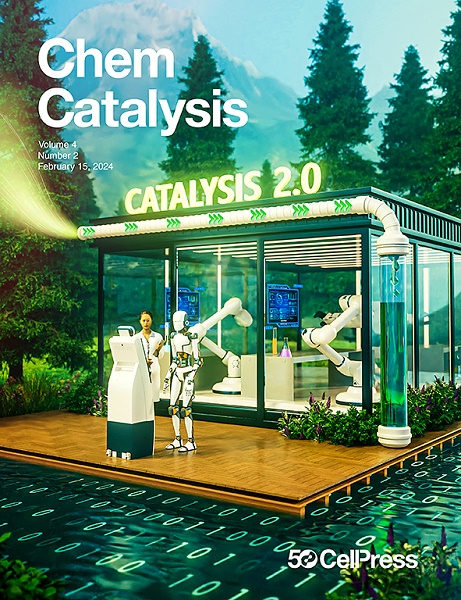提高立体选择性的机器学习辅助蛋白质工程
IF 11.6
Q1 CHEMISTRY, PHYSICAL
引用次数: 0
摘要
生物催化是一种很有前途的不对称合成方法;然而,酶的天然底物特异性往往限制了它们的立体选择性,因此,蛋白质工程对提高酶的性能至关重要。这一观点总结了机器学习辅助蛋白质工程的立体选择性,重点是通过实验数据训练的监督学习模型,以揭示酶/底物描述子与立体选择性之间的相关性。这种方法可以以较低的计算成本提供相对准确的预测,从而提高或逆转酶的立体选择性。尽管取得了这些进展,但仍然存在挑战,例如缺乏可靠的立体选择性数据,模型的预测性能和泛化能力有限。大量高质量数据的整合,更准确的结构和物理化学描述符,以及创新的算法,有望开发出更强大和可推广的模型,可以预测广泛的酶和底物的立体选择性。这种方法可以为不对称合成中更有效和可持续的生物催化过程铺平道路。本文章由计算机程序翻译,如有差异,请以英文原文为准。

Machine learning-assisted protein engineering for improving stereoselectivity
Biocatalysis is a promising approach to asymmetric synthesis; however, the natural substrate specificity of enzymes often limits their stereoselectivity, and thus, protein engineering is essential to improving enzyme performance. This perspective summarizes machine learning-assisted protein engineering for stereoselectivity, focusing on supervised learning models trained on experimental data to uncover correlations between enzyme/substrate descriptors and stereoselectivity. This approach can provide relatively accurate predictions at low computational cost, thereby improving or reversing enzyme stereoselectivity. Despite these advances, challenges remain, such as the lack of reliable stereoselectivity data and limited predictive performance and generalization ability of models. The integration of large amounts of high-quality data, more accurate structural and physicochemical descriptors, and innovative algorithms holds the promise of developing more robust and generalizable models that can predict the stereoselectivity of a wide range of enzymes and substrates. This approach could pave the way for more efficient and sustainable biocatalytic processes in asymmetric synthesis.
求助全文
通过发布文献求助,成功后即可免费获取论文全文。
去求助
来源期刊
CiteScore
10.50
自引率
6.40%
发文量
0
期刊介绍:
Chem Catalysis is a monthly journal that publishes innovative research on fundamental and applied catalysis, providing a platform for researchers across chemistry, chemical engineering, and related fields. It serves as a premier resource for scientists and engineers in academia and industry, covering heterogeneous, homogeneous, and biocatalysis. Emphasizing transformative methods and technologies, the journal aims to advance understanding, introduce novel catalysts, and connect fundamental insights to real-world applications for societal benefit.

 求助内容:
求助内容: 应助结果提醒方式:
应助结果提醒方式:


